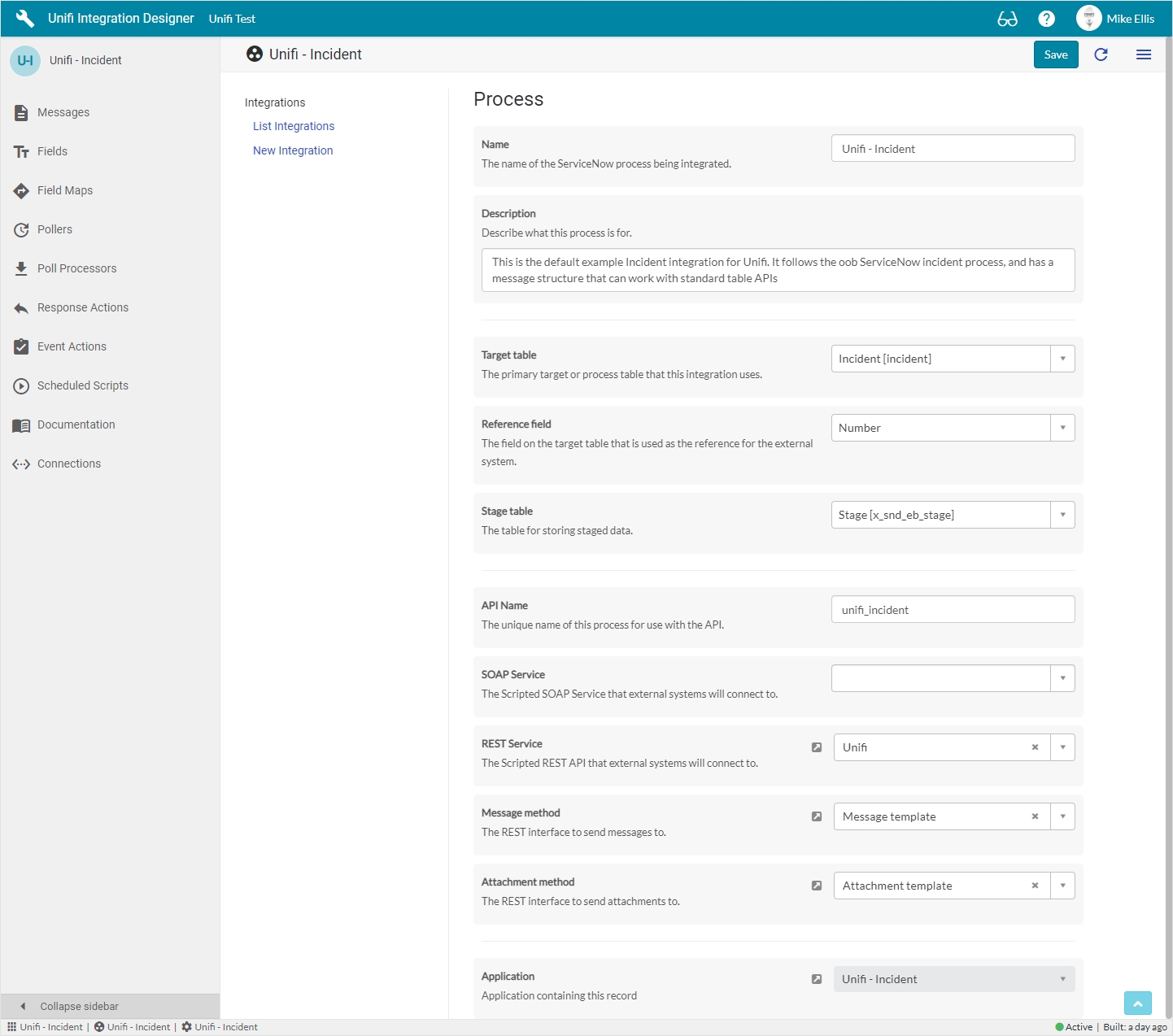Processes
Process is the top level configuration element which contains all Integrations for the Process concerned (e.g. Incident, Problem, Change, Request etc.).
Process is at the top of the configuration chain in Unifi. It is a mechanism which provides functionality not provided OOTB in ServiceNow. The purpose of a process is to keep like integrations in one place (e.g. Incident process integrations, or Change process integrations).
One Process may contain multiple Integrations which can each be configured separately and uniquely (more on that on the Integrations page).
Automated Creation of REST Service
Process Fields

The fields to be configured in the Process record are as follows:
Description
String
A description of what this Process is for and/or how it works.
Target table
Table name
The primary target or process table that this integration uses.
Reference field
Table name
The field on the target table that is used as the reference for the external system.
Stage table*
Table name
The table for storing staged data.
API Name**
String
The unique name of this process for use with the API.
SOAP Service***
Reference
The Scripted SOAP Service that external systems will connect to.
REST Service****
Reference
The Scripted REST API that external systems will connect to.
Message method****
Reference
The REST interface to send messages to.
Action method****
Reference
The REST interface to send attachments to.
Application
Reference
Application containing this record.
Was this helpful?
